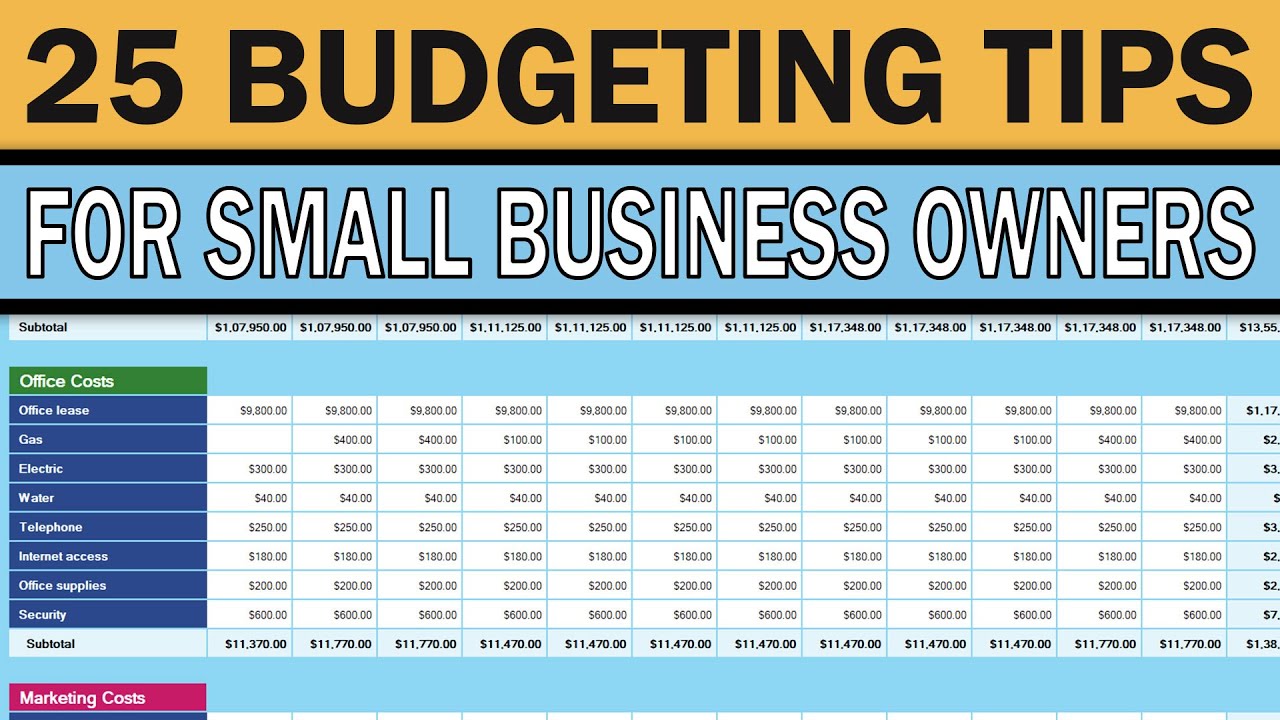
Small Business Budgeting Tips to Watch Your Money
Owning a small business is no small feat; it takes courage, determination, and a keen eye for managing money. The truth is, no matter how great your business idea is, without a solid grasp on financial matters, staying afloat can be a challenge. That’s why budgeting is crucial—it’s the compass that guides your financial decisions and ensures your business is headed in the right direction.
In this article, we’re going to dive into practical and user-friendly budgeting tips that can help small business owners keep a watchful eye on their money without getting tangled in a web of complex financial jargon. Let’s get started.
Know Your Numbers Inside and Out
The first step in creating a budget is to have a clear understanding of your business’s financial situation. You can’t create an effective budget if you don’t know what’s coming in and what’s going out. Take note of your income sources, how much they bring in, and the regularity of these earnings. Likewise, list out your expenses, categorizing them into fixed (like rent and salaries) and variable (like utilities and raw materials) costs. Once you have all this information, you are better positioned to allocate resources wisely.
Stay Lean and Mean
As a small business, you have the advantage of agility: the ability to quickly adapt and change direction when necessary. This applies to budgeting as well. When looking at your costs, check for areas where you can cut back without reducing the quality of your service or product. Maybe there are subscription services you don’t really need, or you can negotiate better terms with your suppliers. Keep your operation lean, and you’ll have more financial room to maneuver when needed.
Expect the Unexpected
One rule of thumb in small business budgeting is to always expect the unexpected. You never know when a piece of essential equipment will need repairs or if a client will delay a payment. For these reasons, it’s crucial to have a contingency fund. A general guideline is to save at least three to six months of operating expenses. This emergency fund can cover you during tough times, helping you to avoid the stress of finding last-minute funds.
Use Budgeting Tools
Gone are the days of managing your finances solely with pen and paper. Technology has provided us with a plethora of budgeting tools and software designed to simplify the process. Some tools can help you track expenses, send invoices, and even provide financial forecasts. Leveraging these tools can save you time, reduce errors, and give you real-time insights into your business’s financial health.
Monitor and Adjust Regularly
A budget is not set in stone; it’s a living document that should evolve as your business grows and changes. Make it a habit to review your budget regularly—at least once a quarter. Compare your actual spending and income against your budgeted figures and analyze any variances. This will allow you to make informed decisions, whether it’s trimming excess spending or ramping up marketing efforts based on your business’s performance.
Plan Ahead for Major Expenses
Most businesses will face significant expenditures at some point, whether it’s purchasing new equipment, relocating, or launching a major marketing campaign. Planning for these expenses in advance can prevent financial strain on your business. Consider setting up a separate savings account for these big-ticket items and contribute to it regularly. This proactive approach ensures that when the time comes, the money will be there without disrupting your day-to-day cash flow.
Keep Personal and Business Finances Separate
This might seem like a no-brainer, but you’d be surprised at how many small business owners mix their personal and business finances. It’s not just messy; it’s a recipe for a budgeting disaster. Open a business bank account, get a business credit card if necessary, and use these exclusively for business transactions. This separation will give you a clearer vision of your business’s financial standing and make tax preparation much simpler.
Review Your Prices
Don’t undervalue the worth of your goods or services. Regularly review the market and your pricing structures. Ask yourself: are my prices competitive? Am I covering costs and making a reasonable profit? Don’t be afraid to adjust your prices in response to fluctuating market conditions or increased costs. Remember, a budget works both ways—it’s about minimizing expenses, but also about maximizing revenue.
Focus on Cash Flow
Cash flow is the lifeblood of any small business. You may have a profitable business on paper, but if your cash flow is poor, it could lead to serious issues. That’s why in your budgeting, it’s important to focus on not just profit but also on cash flow management. Track when money is coming in and going out, and identify ways to reduce the gap between receiving payments from customers and paying your suppliers. Prompt invoicing, following up on late payments, and managing inventory can all improve cash flow.
Invest in Growth
Lastly, remember that a budget isn’t just about cutting costs; it’s also about investing in the future of your business. Allocate funds for growth initiatives like training, new product development, or market expansion. Think of these as investments rather than expenses—they’re essential for taking your business to the next level.
Conclusion

Budgeting might not be the most exhilarating part of running a business, but it is undoubtedly one of the most important. By understanding your finances, staying lean, being prepared for the unexpected, and planning for both the short and long term, you can take control of your money and set your business on a path to financial health and success.
Remember, even the smallest budgeting efforts can lead to substantial improvements in your business’s overall financial performance. Take these tips, tailor them to your business’s unique needs, and watch your money work for you. Your small business’s budget is a powerful tool—it’s not just about tracking dollars and cents; it’s about shaping the future of your enterprise. Embrace it.